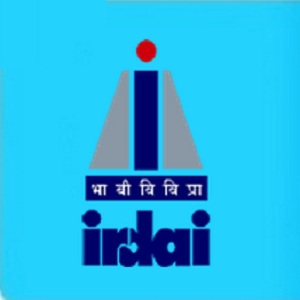Dear Aspirants,
Welcome to Insurance Awareness Questions in AffairsCloud.com. Here we are covering some important Insurance Awareness Questions & Answers with Explanations. Do study this questions thoroughly as it may prove to be helpful in upcoming exams and also in interviews.
- A state tax on premiums paid by its residents and businesses and collected by insurers is called________
A. Income Tax
B. Direct Tax
C. Premium Tax
D. Indirect TaxC. Premium Tax
Explanation:
Premium – The price of an insurance policy, typically charged annually or semiannually.
A state tax on premiums paid by its residents and businesses and collected by insurers is known as Premium Tax. - ________covers professionals for negligence and errors or omissions that injure their clients.
A. Nursing Home Insurance
B. Kidnap/Ransom Insurance
C. Inland Marine Insurance
D. Professional Liability InsuranceD. Professional Liability Insurance
Explanation:
Professional liability insurance is a specialty coverage that is not provided under homeowners’ endorsements, in-home business policies or business-owners’ policies. - A form of annuity that ends payments when the annuitant dies is termed as ______
A. Annuity
B. No Pay
C. Pure Life Annuity
D. None of the AboveC. Pure Life Annuity
Explanation:
Annuity that pays periodic income over the life of an annuitant, and stops only with his or her death. Payments may be fixed or variable. - A policy that is made mandatory for the customer to buy is called _______
A. Annuity
B. Compulsory Cover
C. Pure Life Annuity
D. None of the AboveB. Compulsory Cover
Explanation:
Any type of insurance an individual or business is legally required to buy. Compulsory insurance is mandatory for individuals and businesses that want to engage in certain financially risky activities, such as operating an auto-mobile or operating a business with employees. - The reinsurance bought by re-insurers to protect their financial stability is termed as ______
A. Retention
B. Retrocession
C. Pure Life Annuity
D. None of the AboveB. Retrocession
Explanation:
A transaction in which a reinsurer transfers risks it has reinsured to another reinsurer. - The amount of risk retained by an insurance company that is not reinsured is termed as ______
A. Retention
B. Retrocession
C. Pure Life Annuity
D. None of the AboveA. Retention
Explanation:
Assumption of risk of loss by means of non-insurance, self-insurance, or deductibles. Retention can be intentional or, when exposures are not identified, unintentional. - A method of permitting the final premium for a risk to be adjusted, subject to an agreed-upon maximum and minimum limit based on actual loss experience is called _________
A. Retention
B. Retrocession
C. Retrospective Rating
D. None of the AboveC. Retrospective Rating
Explanation:
A type of plan sometimes used when the insured is a large entity. Under this type of plan, the final premium of a policy is not calculated until close to the end of the coverage period. - Insurance companies that band together as self-insurers and form an organization that is chartered and licensed as an insurer in at least one state to handle liability insurance is called_____
A. Retention
B. Retrocession
C. Retrospective Rating
D. Risk Retention GroupsD. Risk Retention Groups
Explanation:
A risk retention group (RRG) is an alternative risk transfer entity created by the federal Liability Risk Retention Act (LRRA). RRGs must form as liability insurance companies under the laws of at least one state. - An insurance cover that is linked with credit activities and aims to protect the credit is called ______
A. claims
B. Retrocession
C. Retrospective Rating
D. credit lifeD. credit life
Explanation:
Insurance that covers such a loan is known as credit life/credit disability. - Which refers damaged property an insurer takes over to reduce its loss after paying a claim?
A. Salvage
B. Schedule
C. Retrospective Rating
D. credit lifeA. Salvage
Explanation:
Salvage refers Damaged property an insurer takes over to reduce its loss after paying a claim. Insurers receive salvage rights over property on which they have paid claims, such as badly-damaged cars.
Click Here To View Insurance Awareness Questions
AffairsCloud Recommends Oliveboard Mock Test
AffairsCloud Ebook - Support Us to Grow
Govt Jobs by Category
Bank Jobs Notification




